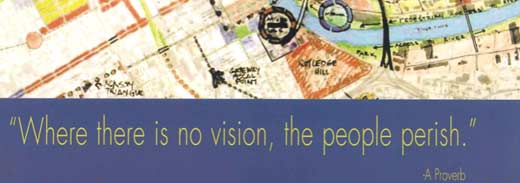
Late last week, a twenty-five member delegation of Cincinnati city staff, members of the
Urban Land Institute (ULI), neighborhood leaders and local developers went to Nashville to see first-hand how form-based codes have accelerated that city's economic development. In her recent budget policy motion, Cincinnati City Councilmember Roxanne Qualls proposed the development of a comprehensive plan that capitalizes on the city's historically dense and pedestrian friendly core and neighborhood business districts.
Form-based codes regulate development's physical form, relationship and scale, rather than using conventional zoning's focus on the segregation of land uses.
While in Nashville, the delegation learned how the city successfully moved from conventional zoning to form-based codes and how citizens were involved in the process.
"To see the thoughful creation of a built environment that creates a sense of place was very powerful," says Scott Golan, a member of the ULI executive committee.
One of the projects they toured was the
Icon in the Gulch, a 400-unit condominium development that sold out in 48 hours.
"It's hard to see the impact of form-based codes and not be persuaded," Golan says. "The quality of what they do is higher. You could tell which buildings were developed under form-based codes, and which were not."
Qualls and city planning staff convened a Form-Based Code Collaborative Group to explore the next steps, including assembling project partners and communicating to the public the importance of using form-based codes to create "places that matter".
"The city leadership seems to be engaging this in the right way," Golan says. "Roxanne Qualls has been working hard to educate people about form-based codes. They're definitely not ignoring the issue."
Writer:
Kevin LeMasterSource: Scott Golan, executive committee, Urban Land Institute Cincinnati
Enjoy this story?
Sign up for free solutions-based reporting in your inbox each week.